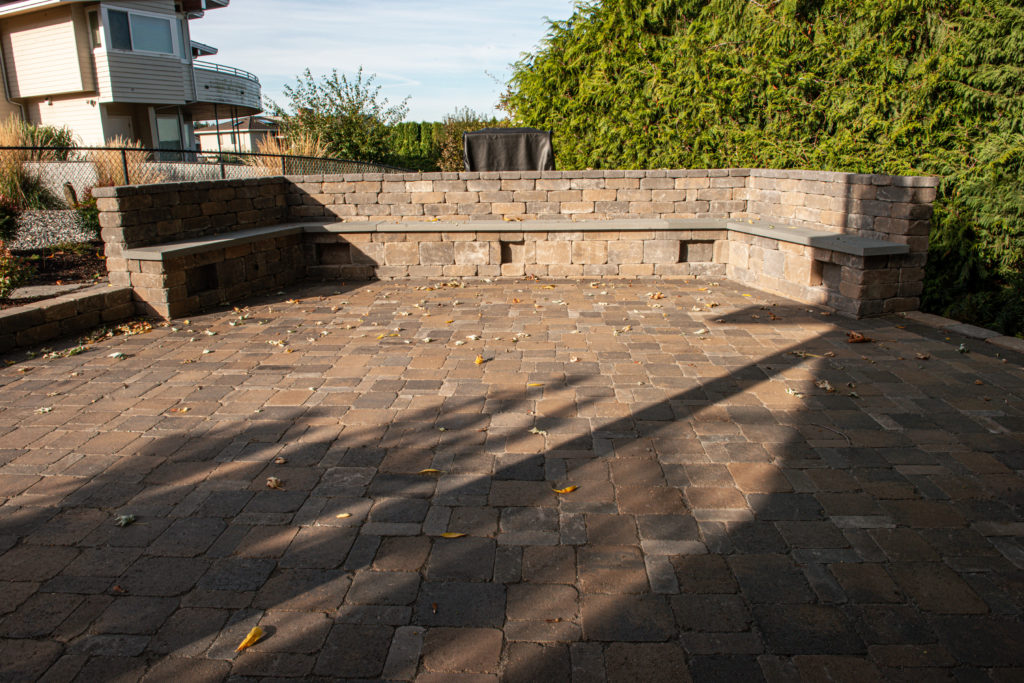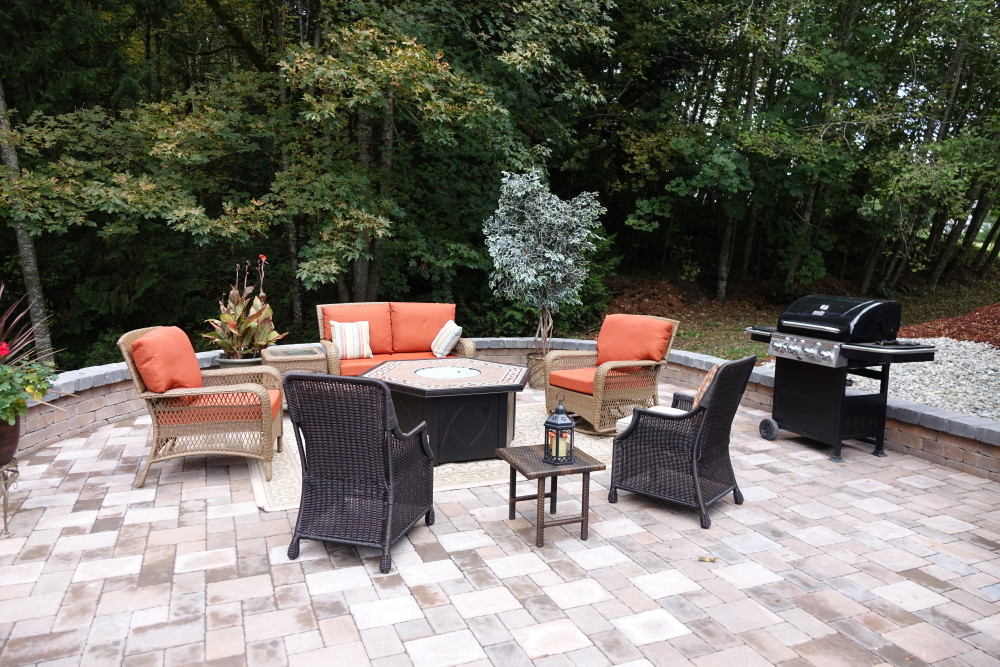This blog post is provided by Jacob Tate, the owner of Dreamscapes Landscape & Design. Dreamscapes is a hardscape/softscape company serving both the South Sound and the Seattle/Eastside area since 2007.
Benefits of a Paver Patio & What to Consider When Planning
Enhance your yard this year by having our team design and install your very own paver patio! When it comes to choosing materials to construct your patio, the benefits of pavers outweigh many other options in the landscaping industry on a number of levels including durability, affordability, and aesthetics.
See More Outdoor Design Options!
Pavers, flagstone, and concrete are all common options when people are looking to add on to their landscaping. While creating a viable outdoor space for gatherings is the end goal, choosing something that will last is equally important. There are a seemingly unlimited number of choices when considering a paver for your project; how do you decide which style is for you?
First you have to determine what purpose the pavers will serve. If it is for a patio or outdoor living space just about any paver will do. However, if it’s for a driveway, you will have to use a paver that is the appropriate thickness or aspect ratio as it has to be thick enough not to crack under the weight of a vehicle. Most small unit pavers will still work, but larger size pavers that are only 6cm or paving slabs are usually too thin.
Once you know the extent of your project, it comes down to the look that speaks to you. In today’s market, concrete pavers come in a variety of textures. The more traditional finish will give you the look of concrete, a tumbled paver with worn edges will provide a more rustic, old world feel, and a slate texture is designed to mimic the appearance of natural stone.
Lastly, consider whether you want to do the project yourself or hire an installer. A simple patio or walkway can be done in a weekend, but major projects might take the help of an expert. Think hard about the time and effort it would take for you to get the outcome you desire.
Pavers are durable, affordable, and easy to maintain
Interlocking pavers are durable and concrete pavers are a great alternative to a poured concrete patio. Concrete slabs are prone to cracking and breaking, which then require patching to fix. This sort of repair work can create an eyesore to your overall landscaping appearance. Weeds also often grow through concrete cracks. Brick pavers are sturdy, stable, and allow for expansion and contraction. Brick pavers are easy to maintain, making them a prime choice above stamped concrete patio slabs.
Using paving stones is ultimately an investment. You will be putting your money into an affordable patio enhancement that will increase your home’s value. Although upfront concrete costs may be slightly lower per square foot, the maintenance, time, and energy invested in repairs overtime adds up. Imagine the relaxing outdoor living space you will create when you set aside the higher costs and finish your DIY project right the first time.

Project by Dreamscapes
Pavers offer a variety of creative design options
One of the things that draw many homeowners to a paver patio is the versatility of options and customization. Individual pavers are available in various shapes, colors, textures, and patterns.
Pavers come in a multitude of shapes and designs. The most common choice is a pure rectangular paver that can be found in Hollands or Cobblestones. However, squares, tapered units, triangular, and longer rectangles are great options as well.
You can utilize pavers to go beyond creating a pleasing patio by bringing a hardscaping element to the rest of your property via walkways, retaining walls, or even a built-in fireplace. Your yard is your canvas when it comes to pavers. You can blend your pavers for a natural look, or create a pattern that stands out. Your pavers can compliment just about any style, from modern to rustic. Customizing your look is only limited by your imagination.

What to expect when your patio installation begins
Selecting patio pavers with the appropriate aesthetics to realize your vision should be at the top of your list, but there are other important aspects of planning your paver patio. Here are some key elements to consider when installing your paver patio:
- Digging – Dig to the proper depth for installation of your material (paver, flagstone, brick, etc.).
- Barrier – Create a barrier with landscaping cloth to minimize the growth of vegetation and weeds.
- Base – Create a flat, level surface by packing down the dirt and using a paver base or sand.
- Drainage – Handle grading to control the slope of the land, which will assist in drainage.
- Edging – Create a solid edge around your patio by using more stone pavers, cement, or vinyl edging to keep pavers intact.
- Filling – Once pavers are set, fill in the cracks with sand for a finished look and to deter weeds from growing.
- Extra pavers – Make sure to store extra pavers in the event that a repair may be needed or you choose to add on to your patio at a later time.
Choosing a paver patio will create a beautiful addition to your landscaping, bring life to your outdoors, and give your family and friends a place to relax, and be entertained outdoors.


